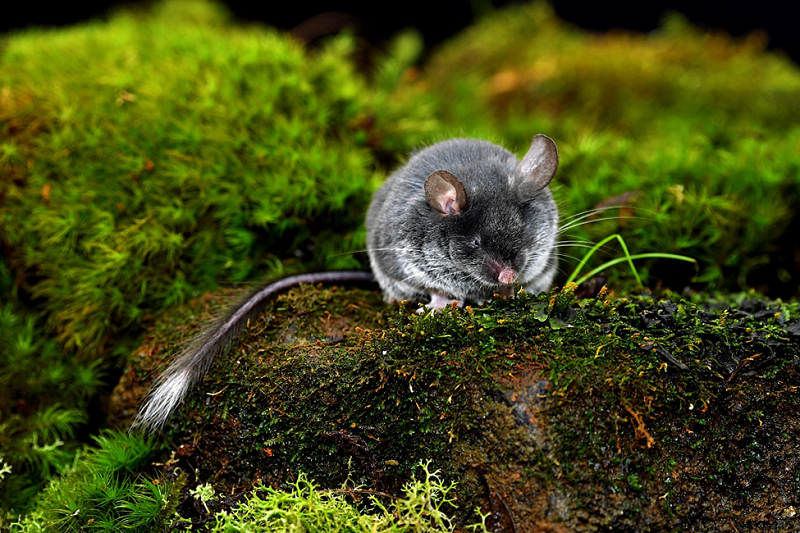In a study published in Science, a research group led by Prof. SHI Peng from Kunming Institute of Zoology of the Chinese Academy of Sciences reported a new echolocating mammalian lineage in rodents, illustrating the underestimated bio-diversity of adaptive complex traits, and offering a potential animal model to investigate the behavioral, physiological, and molecular mechanisms of echolocationEcholocation is a form of orientation behavior whereby echolocating animals can assess vision-ineffective environments by comparing emitted sonic signals with received signals. To date, well-known echolocating mammals include insect-eating bats and toothed whales.
Recently, the Chapa soft-furred tree mouse (Typhlomys chapensis) of the rodent family Platacanthomyidae was found to produce ultrasonic vocalizations (USVs) and suggested to echolocate. The soft-furred tree mice (Typhlomys) contain four recognized species that share similar ecological and morphological traits, and emit regular USVs with peak frequency ~98 kHz.
To test whether the soft-furred tree mice have evolved echolocation, the researchers constructed behavioral platforms to assess the performance of soft-furred tree mice in detecting and avoiding obstacles dependent on hearing.
The soft-furred tree mice were found to spent longer exploration time and emit more sonic pulses in the sector of the central disc over the escaping platform. With ears plugged, they lose the preference for the over-platform sector in exploration time and emitting pluses, and cannot land the platform.
In addition, as in laryngeally echolocating bats, the stylohyal bone was found to fuse with the tympanic bone in the soft-furred tree mice, which may be an anatomic characteristic for a more effective neuronal representation of the outgoing signals as comparison with returning echoes.
More convergences in hearing-related genes and functional convergence of the well-documented, echolocation-related gene prestin between the soft-furred tree mice and echolocating mammals further provided strong evidence that the soft-furred tree mice are a new echolocating lineage within mammals.
“To date, the well-known echolocating animal groups only include insect-eating bats and toothed whales. Now we provided multiple independent lines of evidence for a new echolocating mammalian group. This discovery suggests the underestimation of the bio-diversity of adaptive complex traits.” said Prof. SHI Peng, an evolutionary biologist in Kunming Institute of Zoology, Chinese Academy of Sciences.
“More importantly, this study offers a potential animal model to investigate the behavioral, physiological, and molecular mechanisms of echolocation. Because the soft-furred tree mice are a genus of rodents and closely related to laboratory mice, it is most likely to breed these animals in the lab, which is the primary bottleneck to investigate molecular and evolutionary mechanisms of adaptive traits in nonmodel animals. Then we could perform genetic operations in the soft-furred tree mice as did in laboratory mice.”
This study, entitled “Echolocation in soft-furred tree mice”, was published in Science on 18th June as a Research Article. Web link: https://science.sciencemag.org/content/372/6548/eaay1513 ). Prof. SHI Peng, Prof. JIANG Xuelong, and Dr. LIU Zhen are the co-corresponding authors. Dr. HE Kai, Dr. LIU Qi, Dr. XU Dongming, and Dr. QI Feiyan are the co-first authors. This work was jointly and equally supported by grants from the Second Tibetan Plateau Scientific Expedition and Research Program (grant no. 2019QZKK0501) and the National Key Research and Development Program (grant no. 2017YFC0505202). The National Natural Science Foundation of China (grant nos. 31930011, 31922010, and 31871270) partially supported this project.

A soft-furred tree mouse (Typhlomys cinereus) is resting on a rock. (Photo credit: LIU Qi and MA Xiaofeng)
(By LIU Qi and LIU Zhen, Editor: YANG Yingrun)
Contact:
SHI Peng
ship@mail.kiz.ac.cn
